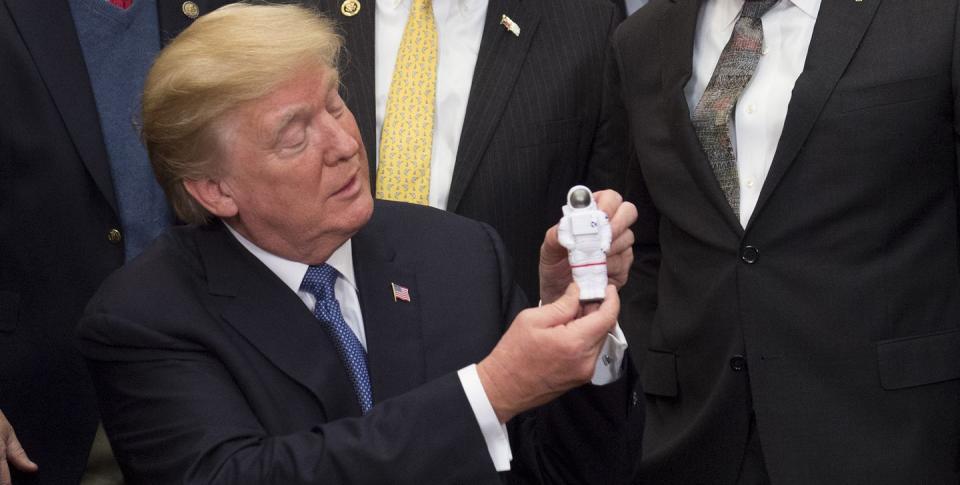Trump Plans to Legalize Mining the Moon

The Artemis Accords seek to make plans for nations to mine the moon.
This follows an April executive order where President Donald Trump laid out a moon-mining goal.
Is the U.S. seeking to use moon rules the way it uses eminent domain in U.S. territory?
President Donald Trump and his administration are moving ahead with plans to mine the moon for valuable regolith. The new Artemis Accords, linked ideologically with NASA’s Artemis program, are a U.S.-led international agreement about using the moon for materials.
Reuters reports the Artemis Accords are meant to help cement both America’s plans to put a station on the moon and the role space travel will play in international diplomacy in the near and far futures. This isn’t just an agreement about mining—it’s a proposed strategy for establishing neutral zones the administration says will prevent diplomatic and commercial disagreements.
The agreement would be the latest effort to cultivate allies around NASA’s plan to put humans and space stations on the moon within the next decade, and comes as the civilian space agency plays a growing role in implementing American foreign policy.
The U.S. hasn’t yet shared the Artemis Accords with its “like-minded” lunar-mining international allies, including Canada, Japan, the United Arab Emirates, and European countries, Reuters reports. (Russia won’t be involved as an early partner; “the Pentagon increasingly views Moscow as hostile for making 'threatening' satellite maneuvers toward U.S. spy satellites in Earth orbit,” sources told Reuters.)
The overall mindset of mining and occupying the moon may seem like a contradiction to the 1967 Outer Space Treaty that the U.S. and most other countries have signed. The U.S. has tried to get ahead of that criticism by claiming, basically like tenants for thousands of years, that the country isn’t planning to damage or take ownership of the underlying structure.
“The idea is if you are going to be coming near someone’s operations, and they’ve declared safety zones around it, then you need to reach out to them in advance, consult and figure out how you can do that safely for everyone,” an anonymous source told Reuters. “This isn’t some territorial claim.”
How do you mine the moon without losing the Outer Space Treaty equivalent of your security deposit? It does seem like digging enormous holes in order to extract materials is a form of land occupation. But within the U.S., eminent domain already allows the “government to take private property and convert it into public use,” Cornell Law School explains on its website, in a process also called condemnation.
Indeed, if the U.S. can pull off extreme land usage without the international legal implication of true ownership, that’s a real lunar hat trick. Since no one can own the moon according to the treaty, no one specific owner country can contest usage. By presenting the Artemis Accord ahead of time, the government can try to shore up a grey area it wants to stay in. And that’s not inherently a good or bad thing—it’s just one strategy for approaching an issue the world will have to grapple with as technology continues to develop.
Before now, the U.S. has primarily issued policies that apply to U.S. citizens and companies only. If the moon follows policies that exist for Antarctica, nations could divide the moon into different territorial claims. Kim Stanley Robinson’s 2018 novel Red Moon posits a multi-owner moon where Chinese and American bases must coexist, if uneasily.
Indeed, “neutral zones” do seem like the forerunners to territory claims. But we’ll see in about 10 or 20 years.
You Might Also Like

 Yahoo News
Yahoo News 